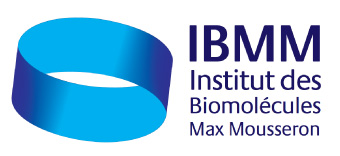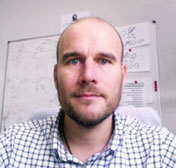Cyclic amino alkyl carbenes – new avenues in catalysis
Séminaire Chimie ED459
Dr. Rodolphe
Le Jeudi 07 juin 2018 à 14h
ENSCM, Amphithéâtre Godechot (campus Balard, 240 av. Émile-Jeanbrau)
Date de début : 2018-06-07 14:00:00
Date de fin : 2018-06-07 15:30:00
Lieu : ENSCM amphi Godechot (campus Balard, 240 av E. Jeanbrau)
Intervenant : Dr. Rodolphe
UCSD/CNRS Joint Research Chemistry Laboratory, UMI 3555, University of California San Diego, La Jolla, CA, USA
Following pioneering work by our group in 1988,[1] and the isolation of the first N-heterocyclic carbene (NHC) by Arduengo,[2] the field of stable carbenes has witnessed outstanding breakthroughs and considerable developments.[3] Due to their strong σ-donating and π-accepting character, and their simple, yet versatile synthesis, NHCs have successfully challenged the stronghold of phosphines in transition metal catalysis.[4] In recent years, we have developed and studied a number of neutral two-electron donor ligands.[5] In 2005, we reported that Cyclic Alkyl Amino Carbenes (CAACs) ligands [6] are amongst the most nucleophilic (σ-donating) and also electrophilic (π-accepting) stable carbenes known. In fact, their low-lying LUMO and small singlet-triplet gap allows for the activation of small molecules, enthalpically strong bonds, and the stabilization of highly reactive main group and transition metal species.[7] We demonstrated that their unique electronics and steric properties allowed for the improvement of known processes (Pd,[6] Ru [8]) while promoting new reactions with coinage metals (Cu, Au).[9] Despite these advances, little has been done since their discovery, to further this ligand system. Hence, we will report new advances in the design and reactivity of CAAC ligands.
References
1. A. Igau, H. Grutzmacher, A. Baceiredo, G. Bertrand, J. Am. Chem. Soc. 1988, 110, 6463.
2. A. J. Arduengo, R. L. Harlow, M. Kline, J. Am. Chem. Soc. 1991, 113, 361.
3. M. Aldrecht, Science 2009, 326, 532.
4. For an overview of stable carbene applications, see: (a) M. N. Hopkinson, C. Richter, M. Schedler, F. Glorius, Nature 2014, 510, 485; (b) L. Mercs, M. Albrecht, Chem. Soc. Rev. 2010, 39, 1903; (c) R. Visbal, C. Gimeno, Chem. Soc. Rev. 2014, 43, 3551; (d) A. V. Zhukhovitskiy, M. J. MacLeod, J. A. Johnson, Chem. Rev. 2015, 115, 11503.
5. (a) M. Soleilhavoup, G. Bertrand, Acc. Chem. Res. 2015, 48, 256; (b) M. Soleilhavoup, M. Melaimi, D. Martin, G. Bertrand, L’Actualité Chimique 2013, 370, 20.
6. V. Lavallo, Y. Canac, A. Dehope, B. Donnadieu, G. Bertrand, Angew. Chem. Int. Ed. 2005, 44, 7236.
7. M. Melaimi, R. Jazzar, M. Soleilhavoup, G. Bertrand, Angew. Chem. Int. Ed. 2017, 56, 10056.
8. (a) D. Martin, V. M. Marx, R. H. Grubbs, G. Bertrand, Adv. Synth. Catal. 2016, 358, 965; (b) V. M. Marx, A. H. Sullivan, M. Melaimi, S. C. Virgil, B. K. Keitz, D. S. Weinberger, G. Bertrand, R. H. Grubbs, Angew. Chem. Int. Ed. 2014, 54, 1919.
9. (a) E. A. Romero, R. Jazzar, G. Bertrand, Chem. Sci. 2017, 8, 165; (b) J. Chu, D. Munz, R. Jazzar, M. Melaimi, G. Bertrand, J. Am. Chem. Soc. 2016, 138, 7884; (c) X. Hu, D. Martin, M. Melaimi, G. Bertrand, J. Am. Chem. Soc. 2014, 136, 13594; (d) R. Kinjo, B. Donnadieu, G. Bertrand, Angew. Chem. Int. Ed. 2011, 50, 5560; (e) X. Zeng, R. Kinjo, B. Donnadieu, G. Bertrand, Angew. Chem. Int. Ed. 2010, 49, 942; (f) X. Zeng, G. D. Frey, R. Kinjo, B. Donnadieu, G. Bertrand, J. Am. Chem. Soc. 2009, 131, 8690.
Contact local ICGM : Prof. Jean-Marc

